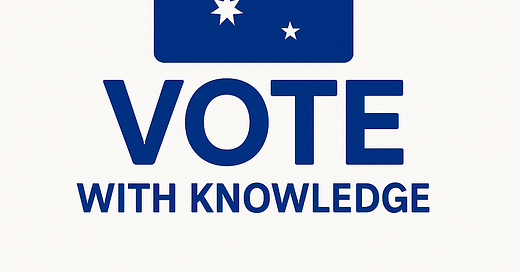An extra 710,000 voters have signed up with the Australian Electoral Commission, as the country prepares to head to the polls in less than a month.
Gen Z and millennial voters born from 1982 onwards will also start replacing baby boomers as the largest voting group.
Jump on aec.gov.au/enrol and get it sorted. You’ll need either a driver’s licence, a passport, or a mate who’s already enrolled to confirm your details.
You have to be 18 to vote, and if you’re enrolling for the first time.
If you’ve changed addresses since the last time you voted, you need to update your enrolment. It's dead easy, just head to aec.gov.au and click on ‘Update your enrolment’. The deadline for address updates is usually a few weeks before election day, so don’t leave it too late.
Not sure which electorate you’re in now? You can check by searching your address at electorate.aec.gov.au. That way, you won’t rock up at the wrong polling station.
How voting works - Alright, so when you go to vote, you’re going to get two ballots, one for the House of Reps and one for the Senate.
House of Representatives (Lower House)
This is the big one. You’re choosing the local MP who will represent your area. There are 151 electorates across the country, and whoever wins the most seats in Parliament forms the Government. The leader of that party becomes the Prime Minister.
Australia uses a preference voting system, so you don’t just pick one person, you rank them all from your favourite to least favourite. Why? Because if your top pick doesn’t get enough votes, your vote moves to your second choice, then your third, and so on, until someone wins the seat.
Senate (Upper House)
Now, this one’s a bit trickier. You’re electing Senators for your state or territory, and 40 out of 76 seats are up for grabs. Each state gets 12 Senators, and territories get 2 each.
The Senate doesn’t decide who forms Government, but it does decide how much of the Government’s policies actually get passed. If the Government doesn’t have a majority in the Senate, passing laws can get pretty messy.
For this one, you have two ways to vote:
Above the line: Pick at least 6 parties and let them decide the order of candidates.
Below the line: Pick at least 12 individual candidates yourself.
If you don’t number enough boxes, your vote won’t count, so make sure you do it right!
On election day, polling stations are usually set up in schools, community halls, and local centres. The Australian Electoral Commission (AEC) will put up a list of locations closer to the date, so you can find one near you.
Can’t vote on election day? No worries. You can vote early in person or by mail if you’re working, travelling, or just keen to get it done.
Overseas on election day? You can vote from overseas, but it’s not compulsory. If you want to, check out aec.gov.au/overseas for the details.




